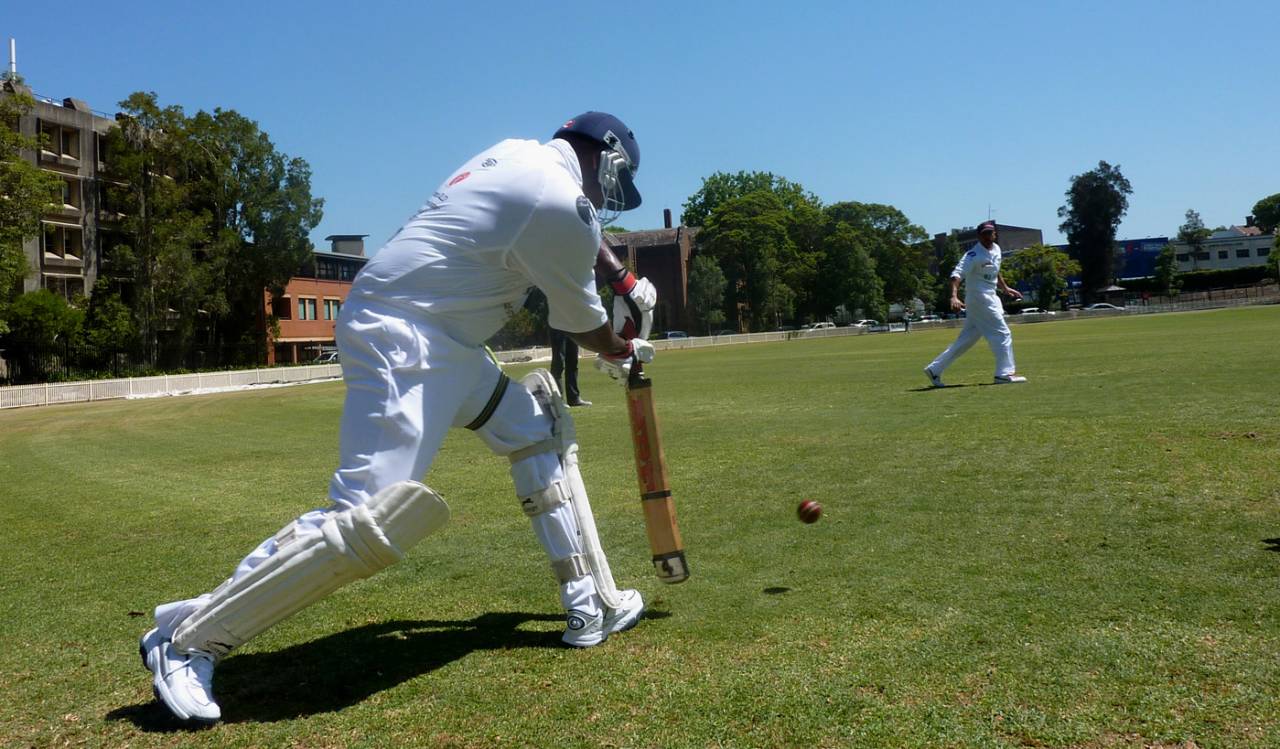My cousin Ben was a good cricketer. A right-arm quick, he played for the combined services, often counting county 2nd XIs and Minor Counties as opponents. On reading
my book, he told me this story about playing at Arundel some years before (apologies if I get it wrong).
On arriving at the ground, he finds a new keeper in the pavilion, rummaging in an old bag. Said keeper triumphantly extracts a pair of gloves and prises the palms apart before turning to Ben, introducing himself as Paul and saying, "This should be interesting, I haven't played for three years."
Cut to Ben's opening spell. Two balls into his first over, the keeper runs up to him saying "Ben, Ben... mind if I stand up, mate?" Ben nods, a little bemused as he considered himself pretty pacy. Running in for ball No. 3, Ben sees an arm waving frantically towards square leg. "Wide down leg? Sure, I can do that," thinks Ben. Wide the ball flies, at pace. Out pops a glove, snatches the ball from thin air, and whips off the bails. The keeper turns to the umpire, "How was that?", and then to the bat, "I'll give you a clue: on your bike, mate." All in all, he stumped three bats standing up to a bowler flinging it down at speeds well over 70mph.
We've all had games with somebody like that, those players who are simply a different class to the rest of the field, but their impact on a game is perhaps greatest when the step up is merely one or two levels. I'm more interested here in those players who have not only reached something like their full potential, but who occupy a snow-capped, cloud-obscured pinnacle of performance compared to the grassy lowlands of, say, Sunday cricket.
I've been lucky enough to have played with several individuals whose natural level is far, far beyond mine, including the current England Women's captain
Heather Knight (well, I had a net with her), and pros who play franchise T20 in their homelands and 2nd XI county cricket in England. As a moderate Sunday player, the difference in our respective levels is quite extreme, and for me to try to step up to their level would be mildly insane. Any innings of mine would be Hobbesian - nasty, brutish and short - and professional spin bowling is too quick for me to stand up to as a keeper. As for seam, I recently kept to a bowler who, at full steam, has been clocked at 85mph. Off four paces I could only just stay with him. And it hurt.
As a moderate Sunday player, the difference in our respective levels is quite extreme. Any innings of mine would be Hobbesian - nasty, brutish and short - and professional spin bowling is too quick for me to stand up to as a keeper
It might be counter-intuitive, but when active pros step down to my level, and, most pertinently, down to my level of facilities, their class can count against them. It might seem odd that I should score 10 when a county 2nd XI player managed a mere seven runs more in the same innings, but there is a simple explanation, and it's not merely that he wasn't fully concentrating.
Here's the rub: the professional reacts; the amateur responds.
One of the most enduring of defining characteristics thought to separate the human from the animal was put forward by the ancient Greeks, namely that humans respond while animals react. A response is considered; a reaction instinctive, automatic. We've all heard of the fractions of a second it takes for a 90mph ball to reach the batsman, and how this is not long enough to allow much in the way of rational thought. This is where training comes in. We train in order to make the fundamental techniques automatic.
When I trod the boards as a musician, I honed my technique through hours of hard work so that I could, when in "the zone", pretty much make sound happen. There was no thinking about fingerings, chords, notes, rhythm patterns. I simply heard sound, and out it came. It's the same in cricket. When you're in "the zone", everything clicks, and you simply will the ball to the boundary. There's no thought, simply perfectly timed reactions. These reactions are honed by hours of work in the nets and in the middle. All practice is designed to reduce the need for thought. And that's where everything goes wrong.
Put a pro on a Sunday wicket, all low, slow, variable bounce, and the instinctive becomes suicidal, even accounting for the headroom built into their game. The ball pitches short, the batsman goes on to the back foot to pull, the ball stays two inches above the ground. A half-volley invites the drive, but the ball plugs, the bat swings, mid-off says thank you kindly. The very thing that makes the pro so good is their downfall.
And as for bowling, the pro's stock ball is almost always too short, too wide, and too quick. Hardly any Sunday player can get near them. The pro is, therefore, forced to think, the very thing they train to avoid. Me? I'm constantly adjusting, thinking, changing my mind, quite often during my shot. At my level, it's feasible, and on the wickets I frequent, one might say it's even imperative.
It's only at the very highest level that you find the very best, the ones capable of adding improvisation to instinct, to move, like those rare truly great musicians, beyond technique and well-rehearsed patterns into the realms of pure expression. These players will change any game.
Oh yes, the keeper. Sorry, I got distracted. At the end of the game, Ben took a peek at the scorebook and clocked who he was:
Paul Farbrace.
Pete Langman is the author of The Country House Cricketer. All profits go to help fund research into Parkinson's disease. @elegantfowl
